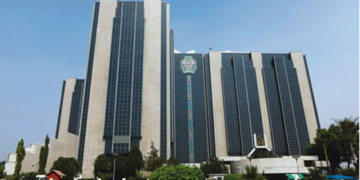Several Boeing 737 Max 9 planes have been grounded across the world after an aircraft operated by Alaska Airlines made an emergency landing in Portland USA due to panel blowout in midair.
Also read; FG releases ₦108.5bn for emergency repair of roads – Dave Umahi
Investogist reported that Alaska Airlines Flight 1282 carrying 177 passengers and crew onboard turned back minutes into its flight from Portland Oregon to Ontario California, and landed safely in Portland, after it lost a window and a section of the fuselage mid-air on Friday.
Following Alaska Airlines grounding of 65 of its 737 Max 9 aircrafts, dozens of the aircraft have been grounded across the world, including in the US, Latin America, Türkiye and the EU.
The US Federal Aviation Administration (FAA) on Saturday ordered the temporary grounding of certain Boeing 737 MAX 9 aircraft operated by U.S. airlines or in U.S. territory.
“The FAA is requiring immediate inspections of certain Boeing 737 MAX 9 planes before they can return to flight,” FAA Administrator Mike Whitaker said. “Safety will continue to drive our decision-making as we assist the NTSB’s investigation into Alaska Airlines Flight 1282.”
The Emergency Airworthiness Directive (EAD) requires operators to inspect affected aircraft before further flight. The required inspections will take around four to eight hours per aircraft.
The EAD will affect approximately 171 airplanes worldwide.
In accepting the decision by the FAA, Boeing said that it “deeply regrets” the incident, adding that its technicians are assisting in the investigation.
In a lock-step with US FAA, the European Union Aviation Safety (EASA) adopted US air regulator’s directive. However, in a statement on its website, EASA stated that it took the ” decision to adopt the FAA EAD despite the fact that, to the Agency’s knowledge and also on the basis of statements from the FAA and Boeing, no airline in an EASA Member State currently operates an aircraft in the relevant configuration.”
EASA went further to explain that “in the specific set-up covered by the EAD, a mid-cabin exit is replaced by a plug-in panel. This configuration is typically adopted by airlines flying lower-density operations (with lower passenger capacity) where this additional exit is not required to meet evacuation safety requirements.
“The 737-9 aircraft operating in Europe do not have this configuration and are therefore not grounded by the EAD and can continue to operate normally.”
Britain’s Civil Aviation Authority said that while UK airlines do not fly this type of plane, it has asked foreign permit carriers to request that inspections be undertaken prior to operation in UK airspace.
Turkish Airlines also announced that it would suspend the operation of its five Boeing 737 MAX 9 aircraft until the technical review process is completed, stressing that “flight safety is our top priority.” Latin American carriers Copa Airlines and Aeromexico followed suit, also grounding 40 aircraft.
The Max-9 is the latest of Boeing’s 737 series of twin-engine, single-aisle planes. The aircraft, which went into service in May 2017, is frequently used in US domestic flights.
The Boeing 737 Max series has been described as “the most scrutinised transport aircraft in history” following a series of investigations into its safety, particularly after the Max was grounded for 18 months in March 2019 following two crashes in 2018 and 2019, that killed a total of 346 people.
In order to resume operations, each Max aircraft underwent significant safety modifications. Around 1,300 Boeing 737 Max-9 planes are thought to be currently in operation, according to data from the manufacturer.
Nnamdi Maduakor is a Writer, Investor and Entrepreneur




















































